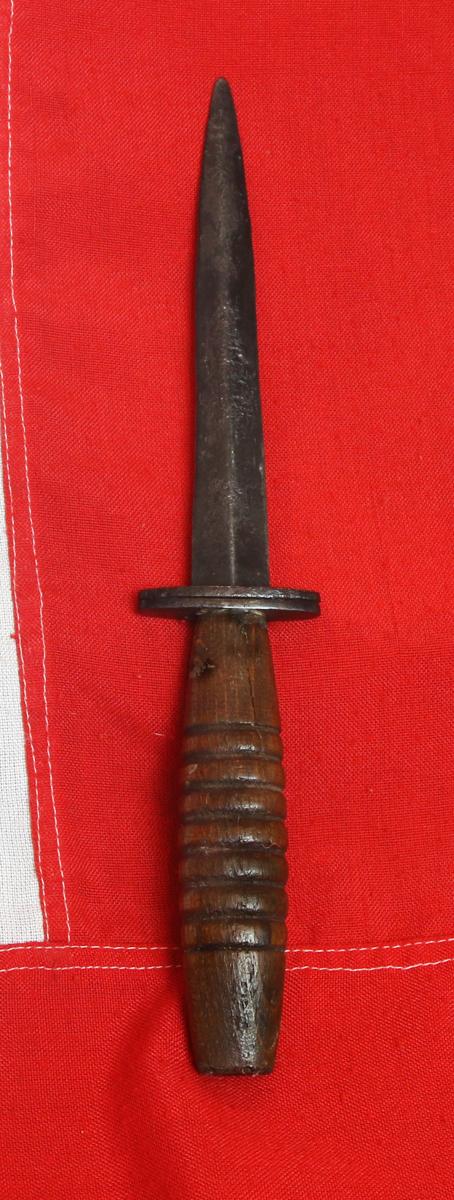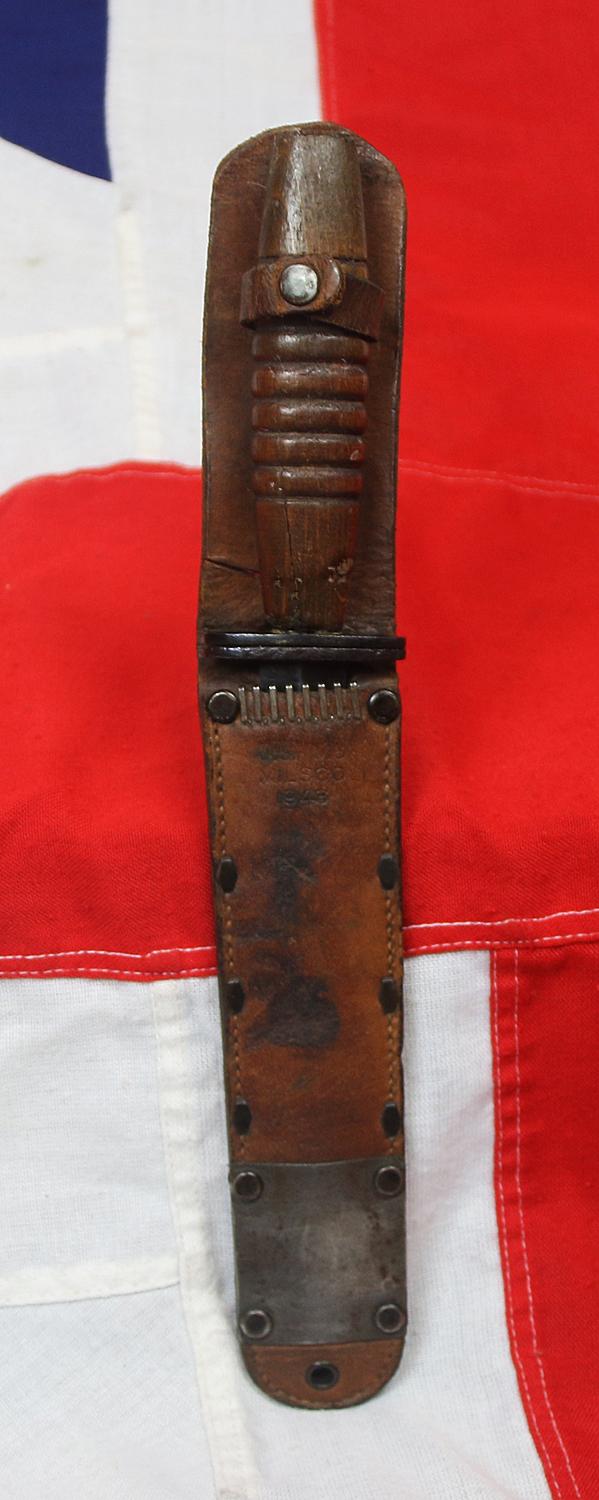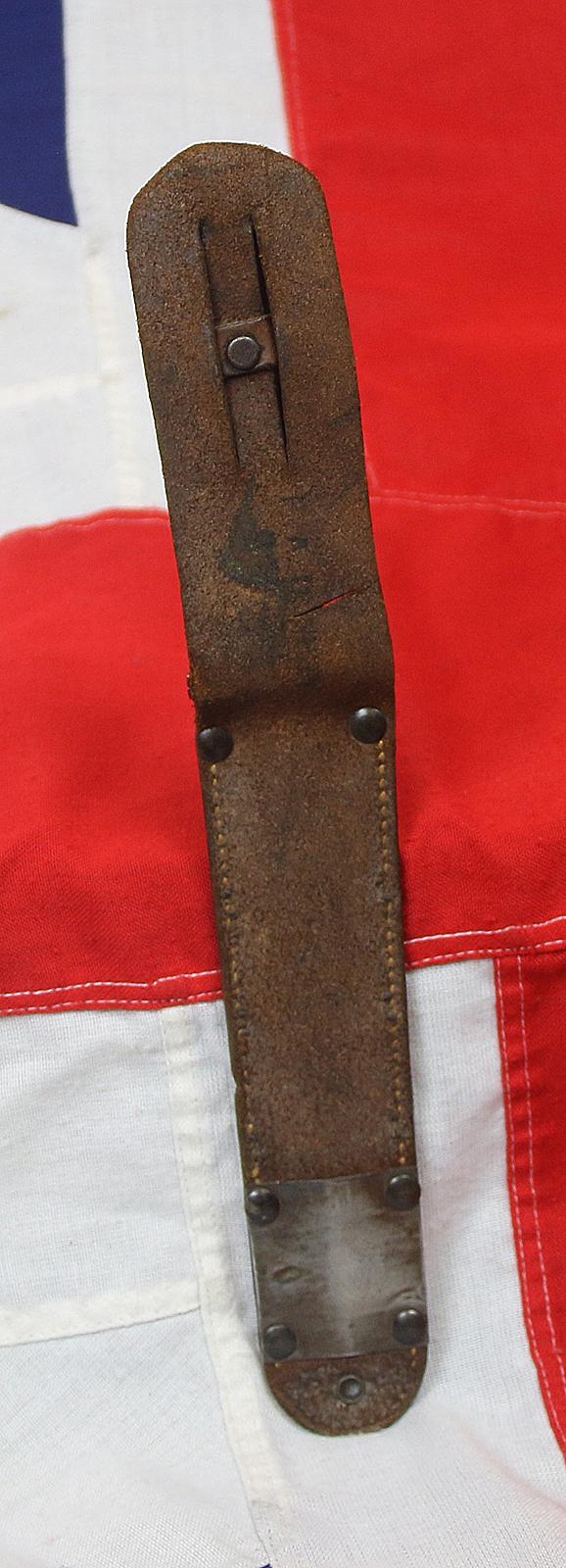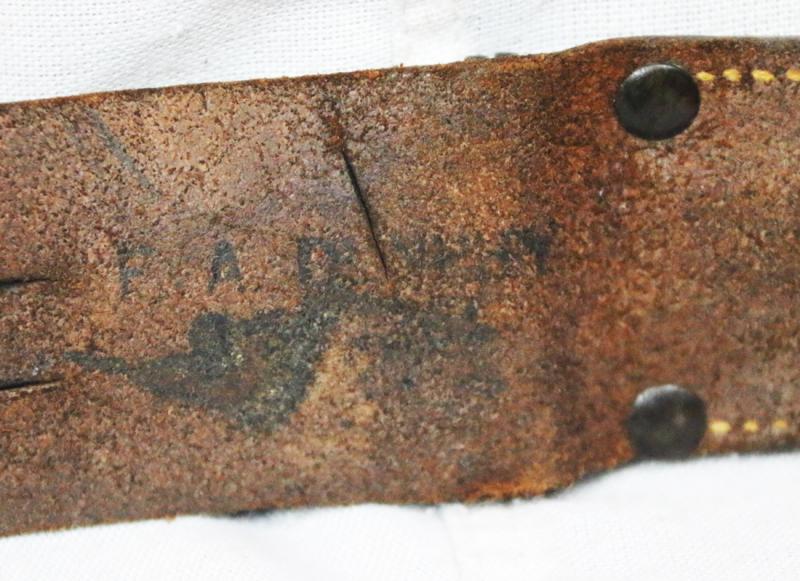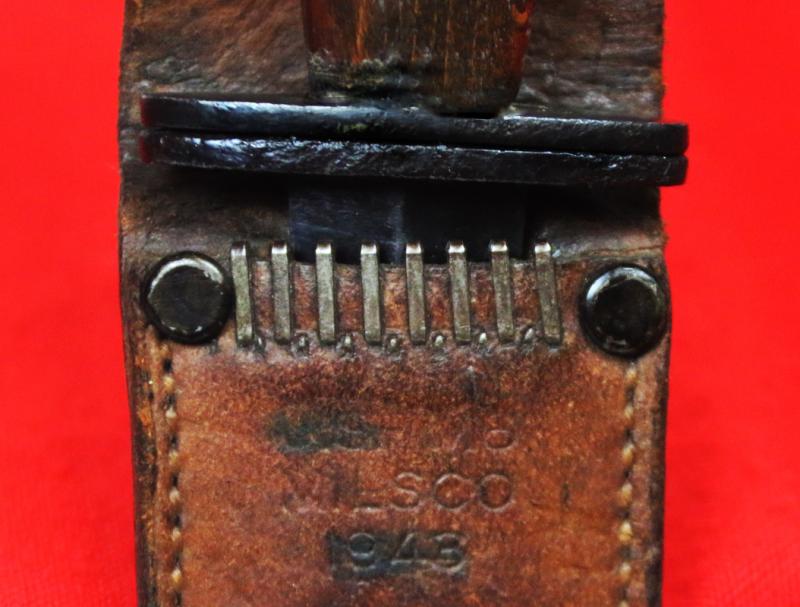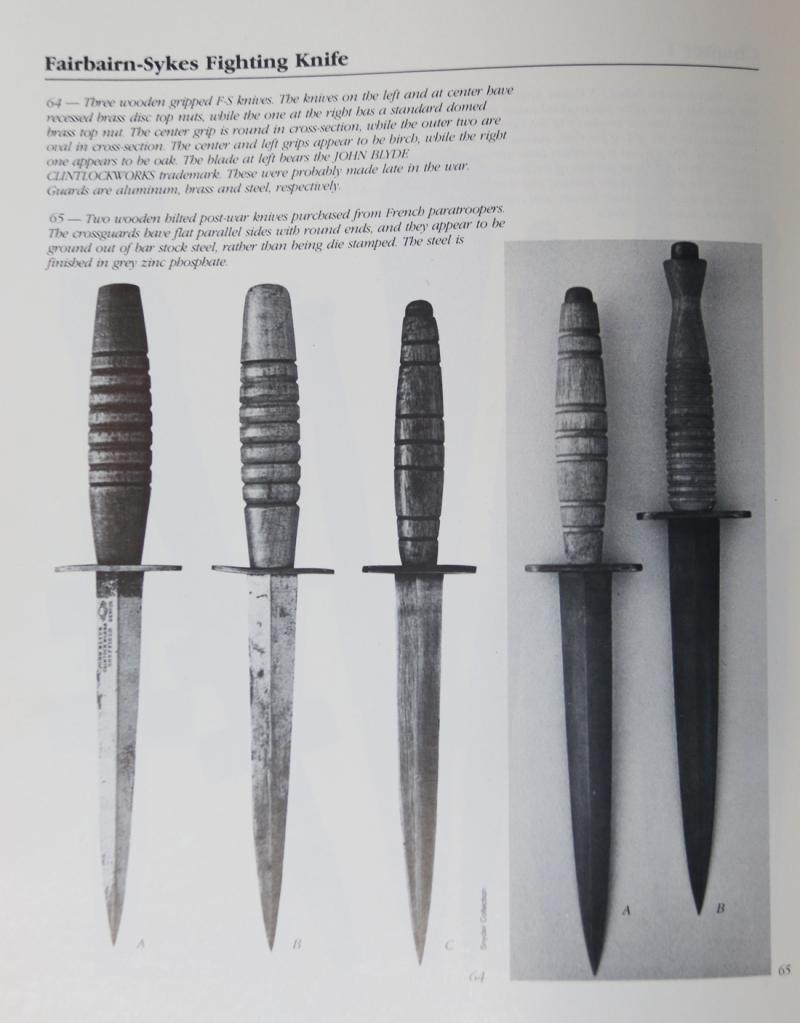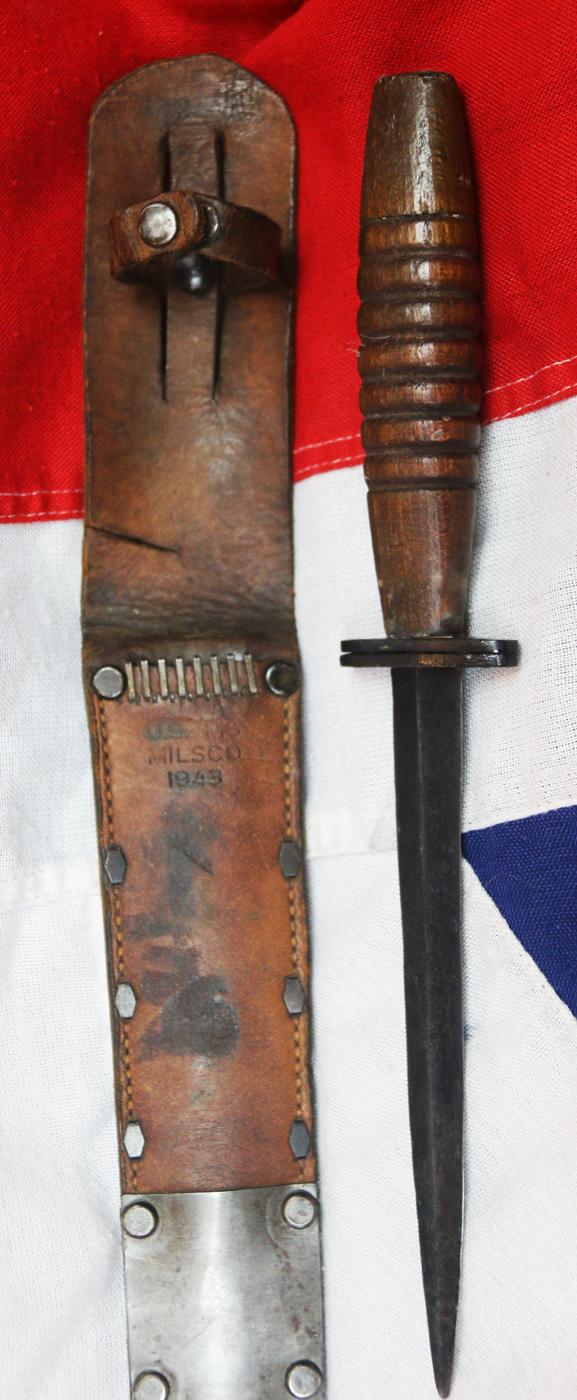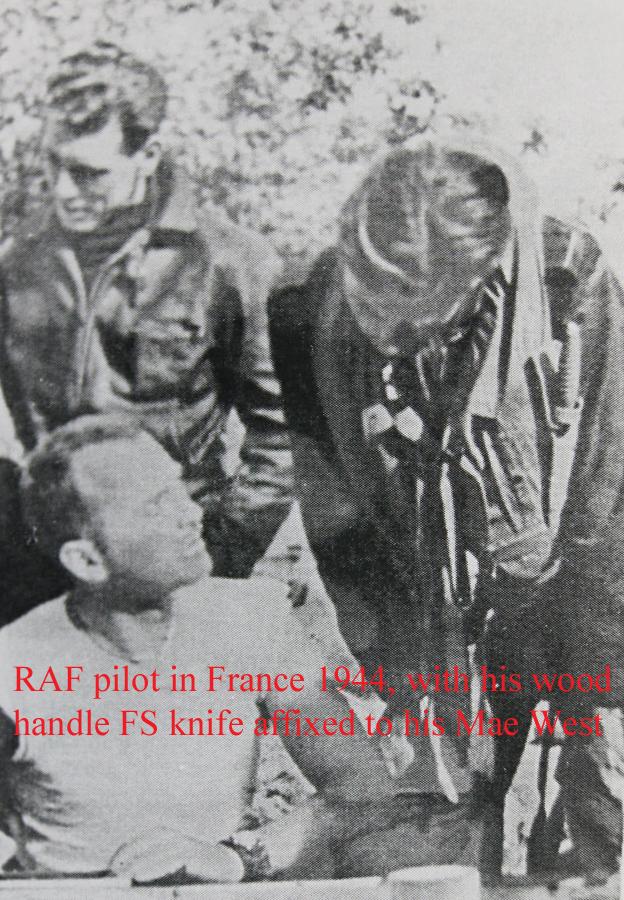A Good, & Rare, WW2, Wooden Handle FS Knife, Used by Both RAF or American USAAF Air Crew
Only the second we have seen in 10 years, and both, most unusually were fitted within American, Airborne Div scabbards. It may well be that the regular FS scabbard were nowhere near as robust as the American fighting knife’s scabbard.
Set in a US M6 Pattern scabbard with steel protection plate and coffin shaped seam rivets. Patinated blade with past russetted surface, good turned hilt and scabbard.
The bottom scabbard protection plate was to ensure the blade tip didn't protrude from the scabbard on high impact landing by parachute. Although they were initially intended for RAF aircrew and pilots they were universally popular by men of all the armed services, that felt a wooden hilt more suitable in their field of combat such as areas of extreme cold.
We show in the gallery another wooden handled example of a Fairbairn Sykes close combat knife, in an original period WW2 photo, it is clearly affixed to an RAF Pilot's Mae West life jacket, taken in France in 1944, that will reinforce the aircrew argument for their use in WW2. It is easily seen that this dagger has been untouched since the war.
Of all the variants of the original FS commando knife, the wood handled type is without doubt the rarest to find.
The story about the Fairbairn Sykes Fighting knife starts in England in 1940.
In 1940 the British formed special commandos to carry out raids. The initiative came from Winston Churchill in 1940 for a force that could carry out raids against German occupied Europe.. On the 8 June 1940, Section M09 of the War Office was brought into being. The name commando was taken from small effective mobile Boer units during the war in South Africa 1899-1902. Initially drawn from within the British Army from soldiers who volunteered for special service, the Commandos' ranks would eventually be filled by members of all branches of the United Kingdom's armed forces and a number of foreign volunteers from German-occupied countries.
Reaching a wartime strength of over 30 individual units and four assault brigades, the Commandos served in all theatres of war from the Arctic circle to Europe and from the Middle East to South-East Asia. Their operations ranged from small groups of men landing from the sea or by parachute to a brigade of assault troops spearheading the Allied invasions of Europe and Asia.
Two of the first instructors were Captain William Ewart Fairbairn (b. 28 February 1885, d. 20 June 1960) and Captain Eric Anthony Sykes (b. 5 February 1883, d. 12 May 1945). These middle aged gentlemen trained the young soldiers in a new and difficult mode of close-combat fighting at the Commando Basic Training Centre, Achnacarry, Scotland. Churchill described the commandos as 'a steel hand from the sea'
The need for a proper fighting knife, for these commandos, was apparent from the first few weeks of training specialized personnel. As Fairbairn later wrote, "...the authorities did not recognize a fighting knife as part of the equipment of the fighting services. In fact, such a thing as a fighting knife could not be purchased anywhere in Great Britain."
Until now, there had never been an official knife for the British armed services, although many types of knife had been authorised for use in the past. Bowie style knives were carried by some of the Imperial Yeomanry during the South African War of 1900-1901, and in World War I cut-down bayonets, privately purchased hunting knives, or captured German issue folding knives were extensively utilised.
In November 1940 there was a meeting between W. E. Fairbairn, E. A. Sykes and Robert Wilkinson Latham at Wilkinson Sword Company.
Fairbairn and Sykes described the type of knife they envisioned and the purpose for which it was intended. As discussion continued, preliminary sketches were drawn up and modified time and time again. As Robert Wilkinson Latham tells it: 'In order to explain exactly their point, the two men rose to their feet and one, it was Fairbairn my grandfather mentioned, grabbed the wood ruler from his desk and the two men danced around the office in mock combat'. W. E. Fairbairn author of Get Tough had also brought with him an example of a suitable fighting knife. It came from and through a collector of original WW2 British Fighting knives, whose uncle originally acquired most of them in service, and he was a serving commando in WW2 , in 6 Commando. His surname was Allen known as ‘Uncle Bill’, but his first name was not Bill, he just preferred that apparently. Photo in the gallery of several types of wood hilted FS knives, from Allied Military Fighting Knives by Roberet A.Buerlein page 42.
Code: 23449


